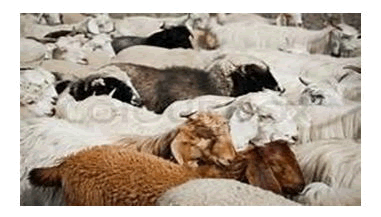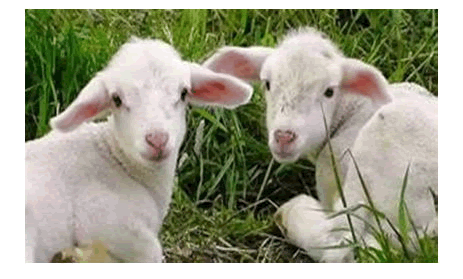Case Report, J Vet Sci Med Diagn Vol: 12 Issue: 3
Veterinary Research under the Conditions of Merino Sheep in Farm and Field Conditions of Srinagar
Karnan Ram1*, Ahmad Yadhav2 and OO Oyinlola23
1Department of Veterinary Microbiology, Skuast University, Kashmir, India
2Department of Veterinary Science, Sharda University, Kashmir, India
3Department of Veterinary Science, Jos University, Plateau State, Nigeria
*Corresponding Author:
*Corresponding Author: Karnan Ram
Department of Veterinary Microbiology,
Skuast University,
Kashmir,
India,
Tel: 1942461271;
E-mail: karnanjohn10@gmail.com
Received date: 27 May, 2020, Manuscript No. JVSMD-20-11898; Editor assigned date: 01 June, 2020, PreQC No. JVSMD-20-11898 (PQ); Reviewed date: 15 June, 2020, QC No. JVSMD-20-11898; Revised date: 02 January, 2023, Manuscript No. JVSMD-20-11898 (R); Published date: 30 January, 2023, DOI: 10.4172/2325-9590.100035
Citation: Ram K, Yadhav A, Oyinlola OO (2023) Veterinary Research under the Conditions of Merino Sheep in Farm and Field Conditions of Srinagar. J Vet Sci Med Diagn 12:1.
Abstract
Kashmir Merino sheep are used by the rural farmers as a source of food and cash and are believed to have adapted to harsh conditions of Kashmir region. There is scanty information available about the characteristics of this breed. The aim of this study was to characterise this breed on the basis of morphometric traits for the purposes of its conservation. A study was conducted in four community development blocks of district Srinagar and sheep breeding farm dachigam in the union territory of Jammu and Kashmir under farm and field conditions utilizing 897 sheep. Present study revealed that Kashmir Merino sheep is off-white in colour predominantly with narrow long and convex head profile (45.2%); ears are predominantly broad and droopy (42.2%) and horns oriented in backward forward and outward direction (80.9%) although majority (78.5%) of the animals were polled. In conclusion, the phenotypic diverseness in Kashmir Merino sheep provides an opportunity to exploit this sheep by selecting animals related to phenotypic features.
Keywords: Kashmir merino sheep, Physical traits, Performance traits, Field and farm conditions
Keywords
Kashmir merino sheep; Physical traits; Performance traits, Field and farm conditions
Introduction
About 73% of rural India owns livestock and this sector provides employment to 22.45 million people directly or indirectly [1]. The livestock sector alone contributes nearly 25.6% of Value of output at current prices of total value of output in agriculture, fishing and forestry sector. The overall contribution of livestock sector in total GDP is nearly 4.11% at current prices during 2012-2013 [2]. The J and K is ideally suited for rearing of sheep and goats owing to its favourable agro climatic conditions, rich alpine pastures and host of other natural endowments. Sheep and goat rearing is the core activity of rural masses in J and K and plays a vital role in socioeconomic upliftment of weaker sections of the society viz, Gujjars and Bakarwalls, Chopans, Gaddies and Changpas [3]. The J and K is native to about 9.2 million livestock excluding poultry with a population of 5.4 million small ruminants representing approximately 59% sheep alone (3.389 million) representing approximately 37% of the total livestock population of the state. Kashmir Merino is a crossbred strain developed by crossing Gaddi, Bhakarwal and Poonchi with 50% to 75% exotic inheritance of Rambouillet and Merino sheep in J and K. It was a huge success in terms of improving the wool and mutton production. In spite of being such a success there is barely any documentation about its morphometric characteristics [4]. Also, the growth performance of this sheep over the years has declined which needs effective development programmes for redressal, therefore, the present study was undertaken.
Case Presentation
The proposed work was undertaken in the four Community Development (CD) blocks of district Srinagar and sheep breeding Farm dachigam where the kashmir merino breed was evolved. Srinagar city is located at an average elevation of 1600 meters above mean sea level and it is spread over in the heart of the oval shaped valley of Kashmir. It is situated between 740-56’ and 750-79’ East longitude and 330-18’ and 340-45’ North latitude [5]. Srinagar has a humid subtropical climate, much cooler than what is found in much of the rest of India, due to its moderately high elevation and northerly position. The valley is surrounded by the Himalayas on all sides. The following morphometric parameters were collected with the help of a measuring tape from 897 animals from selected areas and sheep breeding farm dachigam, head length is measured from point of poll up to the tip of upper lip and expressed in centimetres. Ear length is measured from the base of ear to the tip of pinna and expressed in centimetres. Horn length is measured from base to the tip of horn and expressed in centimetres [6,7]. Chest girth is measured by passing the measuring tape around the chest immediate behind the point of elbow and expressed in centimetres height at withers is measured up to the point of withers from the ground when the animal stood straight on all its four legs and expressed in centimetres. Tail length is measured as distance from the base (sacro-coccygeal articulation) to the tip of tail. The size of the tail was expressed in centimetres. Body length is measured as length from point of shoulder to the point of pin bone and expressed in centimetres [8].
Discussion
Present study was conducted about kashmir merino sheep of different age groups offour community development blocks and sheep breeding farm, dachigam, of district Srinagar in the state of Jammu and Kashmir in order to investigate the physical traits of coat colour, head profile, ear and horn shape and orientation in 897 animals; and performance traits of age at sexual maturity, weight at sexual maturity, gestation period, age at first lambing, weight at first lambing, lambing interval and age at second lambing in 105 and 94 Kashmir Merino sheep under farm and field conditions, respectively (Figures 1 and 2).

Figure 1: Merino sheep.

Figure 2: Farm Sheep.
Investigation revealed that all the Kashmir merino sheep had white coat colour. Head profile in majority of sheep (45.29%) was narrow and long with convex nasal bridge followed by broad and short with convex nasal bridge (24.55%), broad and long with convex nasal bridge (21.75%), broad and short with flat nasal bridge (8.97%), ear shape in majority of sheep was broad and droopy (42.26%) followed by narrow and droopy (21.86%), broad and erect (18.16%), narrow and erect (14.68%), tubular and triangular (3.13%) whereas 0.44% didn’t have ears. Among the males majority were horned (75.55%) while as 24.44% were polled; and in females majority (91.91%) were polled while as 8.08% were horned. Horns were mostly oriented in curved backward forward outward direction (80.95%) followed by curved backward forward inward direction (16.40%) [9,10].
Age at sexual maturity, weight at sexual maturity, gestation period, age at first lambing, weight at first lambing, lambing interval and age at second lambing recorded was 20.81 ± 0.46 and 33.00 ± 0.60 months; 32.85 ± 0.59 and 31.15 ± 0.31 Kg; 5.00 ± 0.0 months; 25.23 ± 0.57 and 37.24 ± 0.60 months; 36.97 ± 0.56 and 32.50 ± 0.37 Kg; 10.84 ± 0.19 and 13.96 ± 0.47 months; 37.75 ± 0.58 and 50.58 ± 0.64 months under field and farm conditions.
Conclusion
It is concluded from the study that sheep farming in Budgam is mainly practiced by poor, middle aged, male and illiterate people having marginal land holdings and low income with agriculture as main occupation and sheep as secondary source of income. The Kashmir Merino is a variable breed adopted to harsh climate of Kashmir Valley. The phenotypic diverseness in Kashmir Merino sheep provides an opportunity to exploit this sheep by selecting animals related to phenotypic features.
References
- Arora R, Bhatia S, Jain A (2010) Morphological and genetic characterization of ganjamsheep. Anim Gen Res 4: 1-9.
[Crossref] [Googlescholar] [Indexed]
- Arora AL, Prince LLL, Mishra AK (2007) Performance evaluation of Jaisalmeri sheep in farmer's flocks. Ind J Anim Sci 77: 759-762. [Crossref]
[Googlescholar] [Indexed]
- Dass G, Prasad H, Mandal A, Singh MK (2008) Growth characters of Muzaffarnagri sheep under semi intensive feeding management. Ind J Anim Sci 78: 1032-1033. [Crossref]
[Googlescholar] [Indexed]
- Ganai TAS, Misra SS, Sheikh FD (2010) Gurez a threatened sheep breed of Kashmir. Ind J Anim Sci 80: 806–808.
[Googlescholar] [Indexed]
- Ganai TAS, Misra SS, Sheikh FD (2011) Description of changthangi sheep of Ladakh. Ind J Small Rumin 17: 32-40.
[Googlescholar] [Indexed]
- Handiwirawan D, Noor RR, Sumantri C, Ubandriyo (2011) The differentiation of sheep breed based on body measurements. J Indon Trop Anim Agric 36: 1-8.
[Crossref] [Googlescholar] [Indexed]
- Kunene NW, Nesamvuni EA, Fossey A (2007) Characterization of Zulu (Nguni) sheep using linear body measurements and some environmental factors affecting these measurements. South Afr J Anim Sci 37: 11-20.
[Crossref] [Googlescholar] [Indexed]
- Pervage S, Ershaduzzaman M, Talukder IAM, Hasan NM, Khandoker MAMY (2009) Phenotypic charecterization of indeginous sheep of Bangladesh. Bang J Anim Sci 38: 1-6.
[Crossref] [Googlescholar] [Indexed]
- Tariq MM, Bajwa MA, Abbas F, Eyduran E, Awan MA, et al. (2011) Some morphological, fertility and growth traits for mengali sheep of Balochistan, Pakistan. Igdır Univ J Inst Sci Tech 1: 63-68.
[Googlescholar] [Indexed]
- Younas U, Abdullah M, Bhatti JA, Pasha TN, Ahmad N, et al. (2013) Inter-relationship of body weight with linear body measurements in hissardale sheep at different stages of life. J Anim Plant Sci 23: 40-44.
[Googlescholar] [Indexed]
 Spanish
Spanish  Chinese
Chinese  Russian
Russian  German
German  French
French  Japanese
Japanese  Portuguese
Portuguese  Hindi
Hindi 
